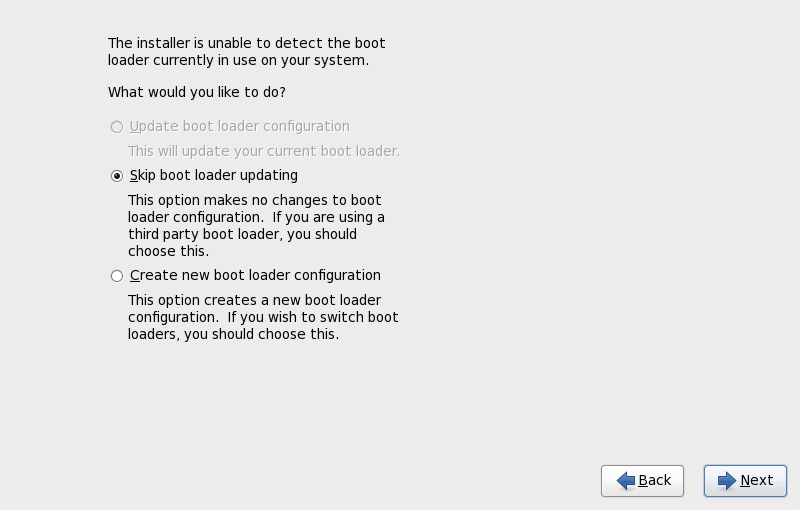9.12.3. Updating the Boot Loader Configuration
Your completed Red Hat Enterprise Linux installation must be registered in the boot loader to boot properly. A boot loader is software on your machine that locates and starts the operating system. Refer to Appendix E, The GRUB Boot Loader for more information about boot loaders.
Figure 9.36. The Upgrade Boot Loader Dialog
If the existing boot loader was installed by a Linux distribution, the installation system can modify it to load the new Red Hat Enterprise Linux system. To update the existing Linux boot loader, select Update boot loader configuration. This is the default behavior when you upgrade an existing Red Hat Enterprise Linux installation.
GRUB is the standard boot loader for Red Hat Enterprise Linux on 32-bit and 64-bit x86 architectures. If your machine uses another boot loader, such as BootMagic, System Commander, or the loader installed by Microsoft Windows, then the Red Hat Enterprise Linux installation system cannot update it. In this case, select Skip boot loader updating. When the installation process completes, refer to the documentation for your product for assistance.
Install a new boot loader as part of an upgrade process only if you are certain you want to replace the existing boot loader. If you install a new boot loader, you may not be able to boot other operating systems on the same machine until you have configured the new boot loader. Select Create new boot loader configuration to remove the existing boot loader and install GRUB.
After you make your selection, click to continue. If you selected the Create new boot loader configuration option, refer to Section 9.18, “x86, AMD64, and Intel 64 Boot Loader Configuration”. If you chose to update or skip boot loader configuration, installation continues without further input from you.
